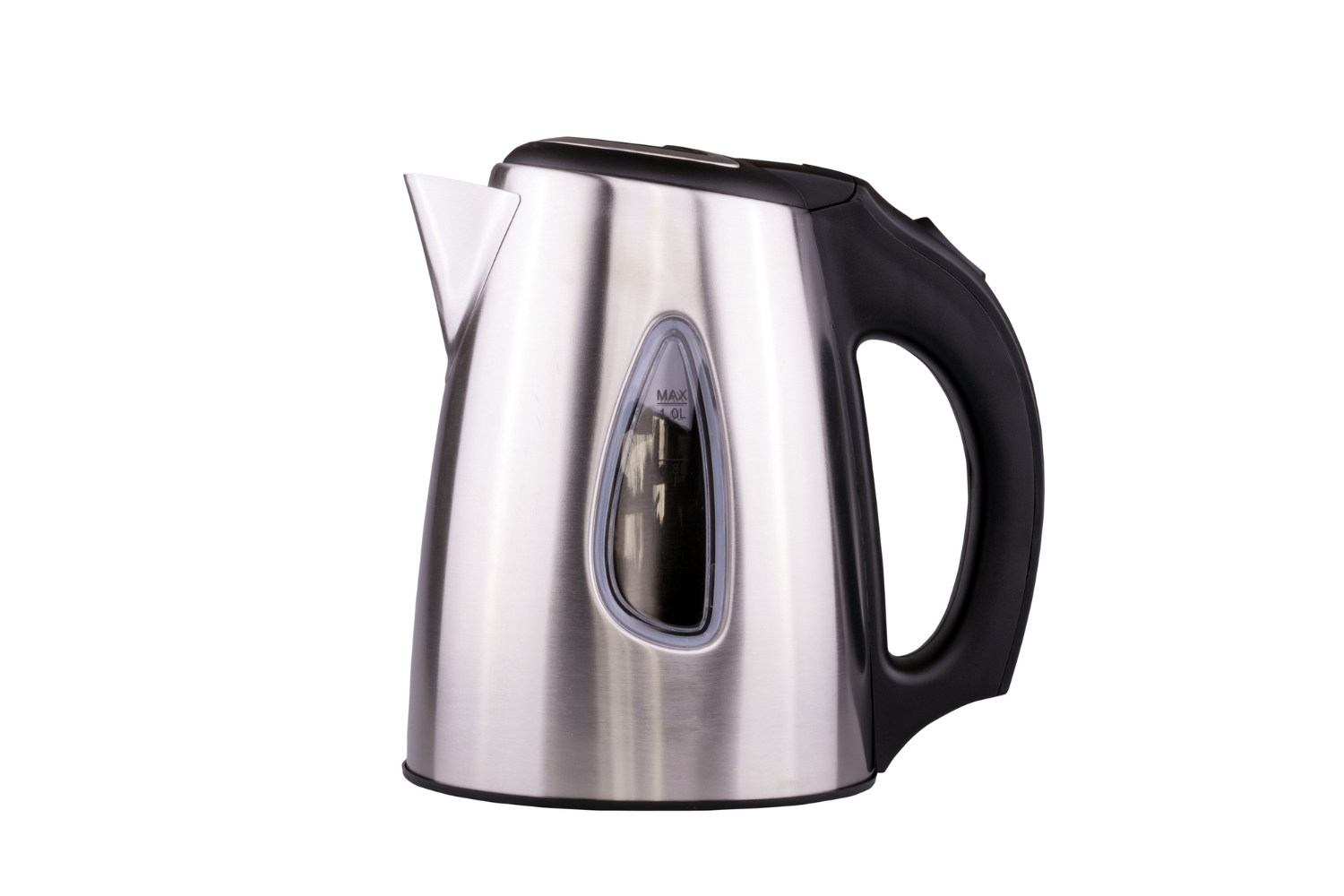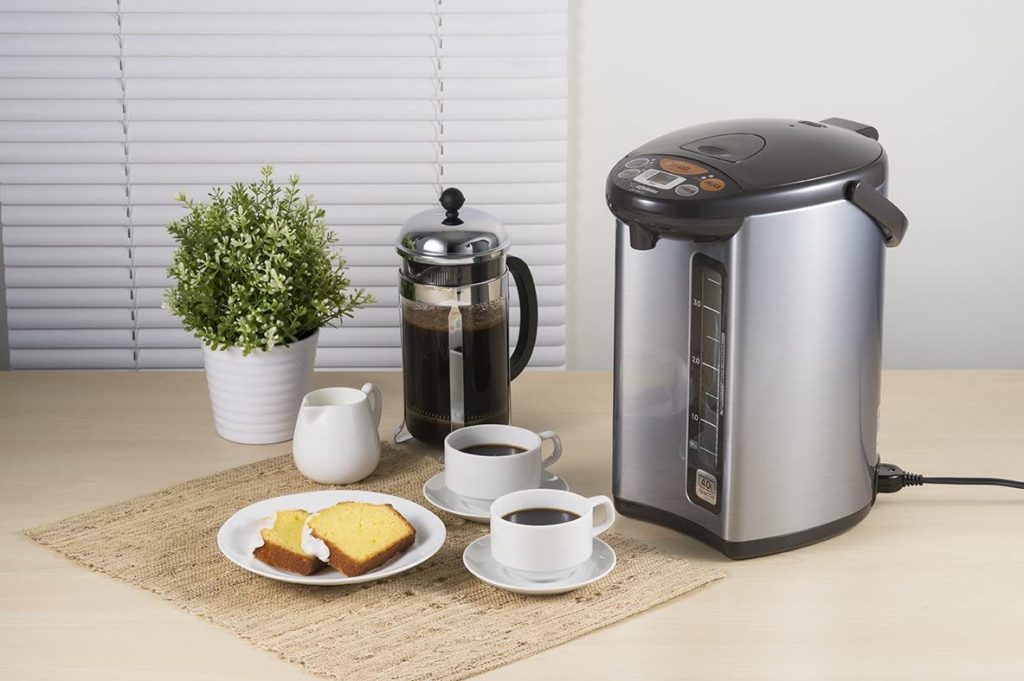Having a portable means of heating water and keeping it hot (or at least warm) is necessary for those in RVs or boats. Thermal aid is also a good idea if you have trouble pouring a traditional kettle, so some people opt for an airpot.
However, some people are particularly with power consumption, primarily if they are regulating their power bills or have somewhat limited energy, as is the case for RV people who use batteries to power their appliances.
The same applies to people who are always on the go and may not be staying at home for long periods. So we explored how people used airpots and kettles, and here’s what we found out.
Are Airpots More Efficient?
There is no consensus about the power consumption of airpots. Some users say that the warming capacity of airpots is something to worry about if you are watching your energy bills because airpots use drips of power to maintain the temperature inside the airpot in the first place. Still, another state that the power consumption of airpots only goes up during the actual heating process.
Should you reduce the amount of water inside to save on power?
Logically, this might work because there would be less water to maintain at a specific temperature, right? However, there is also the small matter of airpots have minimum water levels and ideal water levels.
Some users believe it would be best for your airpot and your energy bills if you followed the recommended water level. However, anything below the minimum can mess with the internal equilibrium of the airpot, and you may end up having the opposite result of what you wanted.
Airpots have gone a long way since the seventies, and the modern ones have much more sensitive temperature sensors and switches that control the water temperature. Many of these airpots also have power-saving mechanisms, so the airpots would only consume the minimum wattage to maintain the water at a specific temperature.
Should people use insulation on electric airpots to keep the contents warm?
This might sound good from a clearer perspective because insulation keeps warmth inside, right? However, there is a big, tiny flaw to this reasoning, and it might be a good idea to avoid it altogether. The flaw in the argument has something to do with the electronic parts of the airpot.
Modern airpots are equipped with more than just mechanical switches and fuses. Many of these modern airpots have sensitive electronics tucked within the walls and control boards.
It would be unwise to prevent natural heat dissipation. The natural heat dissipation protects the electronics from getting burned or catching fire. While everyone is trying to save money on energy bills, the risk of fire is too significant to merit trying this ‘hack.’ So, keep those silicone or wool sleeves away from your airpot, please.
Are Kettles Better Than Airpots?
Kettles are just that – vessels for heating and keeping water. Kettles are also easy to heat, and they work with just about any heating source imaginable. Between kettles and airpots, kettles may take the bacon for saving you gas or electricity, especially if you are only using the most miniature pot for your afternoon tea.
The smaller the vessel, the more efficient the heating and the less energy you will require (overall) for that hot water. However, if you are a regular coffee or tea drinker and you need a little over a little hot water per day, that’s a different scenario altogether. Therefore, it would appear to be practical to use an airpot instead of a kettle for higher volumes of liquid.
Here’s the science behind the recommendation: according to users, the more water you have in a container, the more material you have to essentially store heat. A lower quantity of liquid means there’s very little to hold on to, and heat will dissipate more quickly. If you have more water in the container, the cooling downtime will be slowed down because the heat has to travel past more materials.
Combined, you can see why kettles aren’t that energy-efficient at all if you need hot water throughout the day. Heat passes through the metal, and eventually, that water’s going to turn cold.
Kettles are not designed to hold in heat – they are only intended to change temperature quickly. Inversely, a copper kettle would turn cold very quickly inside a refrigerator because that’s how copper reacts to heat or the absence of heat.
Seasoned travelers recommended combining an ordinary kettle with an efficient thermos. They reminded people that the quality of the thermos bottle has a significant impact on the method’s effectiveness. Ascertain that the thermos has a higher capacity for keeping heat inside, so you can essentially save on energy costs.
The same logic applies when comparing thermos bottles with airpots. A superior quality and high-capacity thermos bottle will be more efficient than a smaller airpot that uses less electricity. Flip the situation around, and a bigger airpot can provide a lot of heating support for days as long as you keep the airpot full.
Whatever the case may be, we recommend buying an airpot or thermos that combines superior insulation of two top-tier materials: a stainless-steel exterior and a thick interior glass wall. The addition of vacuum sealing (at least for thermos bottles) also significantly contributes to keeping heat inside.
To summarize, heating doesn’t consume a lot of gas or power – but what will consume more gas or energy in the long term is keeping the water warm or hot. If this is your problem, you need to add another element to the mix – a thermos bottle that outperforms the kettle. If you already have an airpot, you can also try experimenting with transferring the hot water into the thermos bottle and measuring how effective the thermos is in maintaining the water temperature compared to the airpot.
The picture of the electric airpot is from Amazon – Zojirushi. As an Amazon Associate I earn from qualifying purchases.


